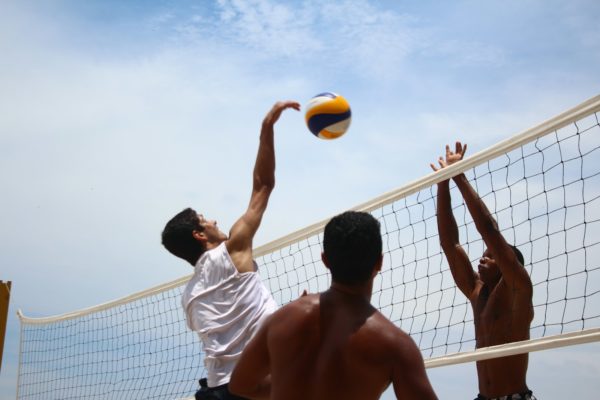Stimulate the involvement and motivation of students by consciously responding to their individual needs.
Student engagement is a major challenge in the educational world. When teaching methods do not meet individual needs, students may lose motivation, become uninterested in the course or even drop out. The ActionTypes® approach offers an innovative solution: understanding, welcoming and respecting each student’s motor and cognitive dynamics to stimulate their natural involvement.
By adapting learning environments and pedagogical approaches to the dynamics of their unique strengths, it becomes possible to support their motivation, their enjoyment of learning, and thus their overall success with the system.
1. Why is student engagement essential?
An engaged student is a student who, among other things:
- Actively participates in the courses.
- Feels valued and understood in his different and original way of learning.
- Find meaning in what he is studying.
- …
However, engagement is often hampered by standardized educational approaches that include:
- Neglects the importance of individual motor and cognitive preferences.
- Limits creativity and self-expression.
- Devalue originality.
- Generate frustration and disinterest.
- …
In response to these challenges, the ActionTypes® approach:
- Identifies the dynamics of each student’s natural forces to facilitate fluid learning.
- Adapts pedagogical approaches to the dynamics of each individual.
- Stimulates sustainable engagement through appropriate strategies.
“I was having trouble finding my place in class. Through exercises that respect the way I work, I am finally enjoying participating.” – Middle school student.
2. Stimulating motivation with personalized pedagogy
Understanding natural dynamics to better foster engagement
Each student has specific preferences that influence:
- How it learns and processes information.
- Her reactions to academic challenges and expectations.
- His level of comfort in social interactions with peers or individual work.
Respecting individual preferences, teachers can:
- Capture attention: Using appropriate media and activities.
- Promote autonomy: By offering tools in line with their natural dynamics.
- Create a positive climate: Where each student feels valued and encouraged.
Concrete example: A high school class in science
In a class where some students were dropping out, the teacher integrated ActionTypes® to adapt his classes:
- Visual students were provided with interactive graphs and diagrams to simplify the reading of complex concepts.
- Other students participated in practical laboratory experiments involving manipulations.
- The result is a significant increase in interest during the course and a better understanding of scientific concepts.

Crédit : Pexels / Rebecca Zaal
3. Practical applications for various educational contexts
The ActionTypes® approach is used effectively in different educational settings:
- In elementary classes: Stimulate children’s natural curiosity with activities adapted to their preferences.
- In middle schools: Engage students through differentiated methods based on their strengths.
- In special education: Addressing the specific needs of students with disabilities or special needs.
- In higher education: Enable students to manage their learning independently and in line with their mode of operation.
Case study: A college class
A French teacher found that class attendance was low and adapted her practices with ActionTypes®:
- Analytical students worked on structured and detailed worksheets.
- Profiles that promote originality have participated in free writing projects.
- Result: a 30% increase in class attendance.
4. Student and teacher testimonials
A high school teacher:
“ActionTypes® has taught me to diversify my teaching approaches. Today, my students are much more engaged and motivated.”
A BTS student:
“I never realized that my way of learning was different from others. Now I work better and understand faster.”
5. Measurable results through ActionTypes®
Institutions that have adopted this approach report, among other things, significant improvements:
- +35% class attendance.
- +20% increase in school achievement.
- Reduced drop-out rates and better general involvement of students.
- …

Crédit : Pexels / Goumbik
6. Benefits beyond academic achievement
Strengthening student engagement has lasting impacts:
- Confidence strengthened: Students feel empowered and recognized in their abilities.
- Improved teacher-student relationship: Mutual understanding creates a positive and respectful environment.
- Development of transversal skills: Autonomy, communication and collaboration are naturally strengthened.
7. Integrate the ActionTypes® approach into your institution
To stimulate student engagement, ActionTypes® proposes:
- Teacher training: Identify and use the natural dynamics of students.
- Interactive workshops: Provide hands-on experiences to engage students and parents.
- Personalized support: Adapt educational strategies to the specific needs of each class (of each student).
“Since I’ve integrated ActionTypes® into my classes, I see an incredible difference in the motivation of my students. They participate, get involved and progress.” – Elementary school teacher.
Conclusion: Increase the involvement and motivation of your students
With the ActionTypes® approach, teaching becomes a fluid and challenging experience for both students and teachers. By respecting their needs and natural strengths, this approach creates an environment conducive to development and academic success.



